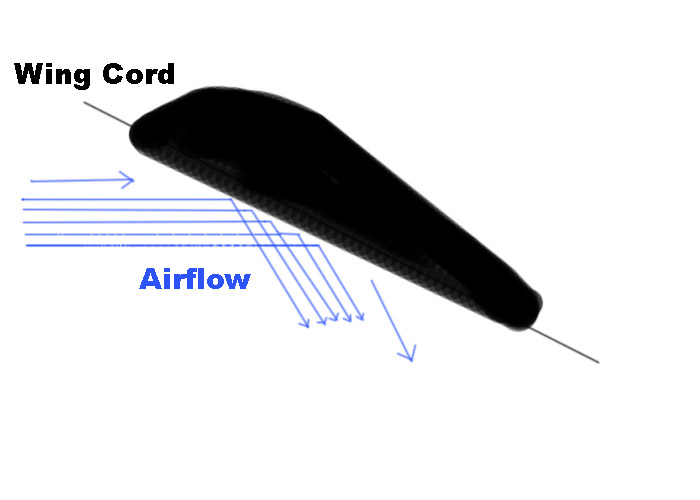The Newtonian Principle
 Photo Courtesy of Devon
Fitzpatrick, Created with Photoshop
|
The
Newtonian
Principle
has
been used as an explanation of how
airplanes achieve lift. Newton's Third Law States that for every
reaction, there is an equal and opposite reaction. The photo
shown displays the effect of relative initial and final airflow to the
wing chord.
The reaction happening in the
photo is that air is hitting the wing chord, similar to a ball hitting
a wall. The air must be deflected, thus confirming that there is an
opposite reaction according to Newton's Third Law. Because the wing
chord is at an angle theta ø relative to the initial airflow,
the final airflow is deflected at a downward angle thus forcing the
wing up. Because the wing is forced upwards in this situation
(resulting from Newton's 3rd Law of an opposite reaction),
lift is created. Many people have chosen to believe that the reason airplanes achieve lift is a combination of Bernoulli's Principle and the Newtonian Principle. Though there are more complex theories created by physicists today, the Newtonian and Bernoulli Principles still continue to be the most popular explanations for aircraft achieving lift. |
Home Page - The Forces - Bernoulli's Principle - Summary - Sources